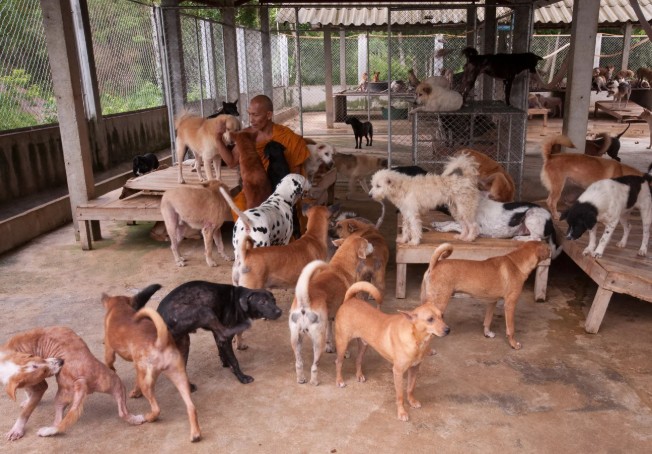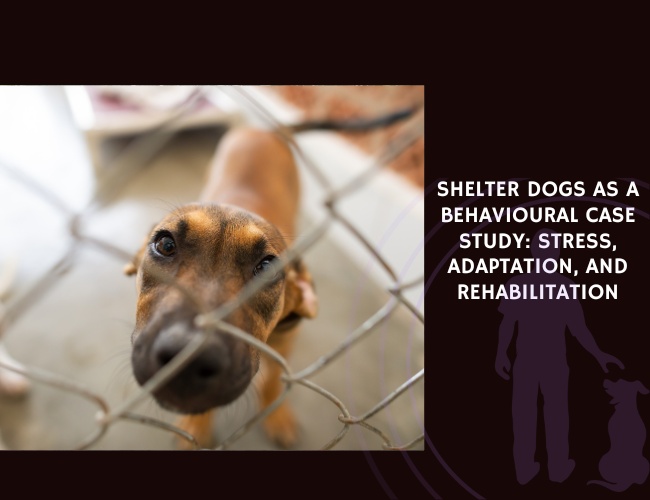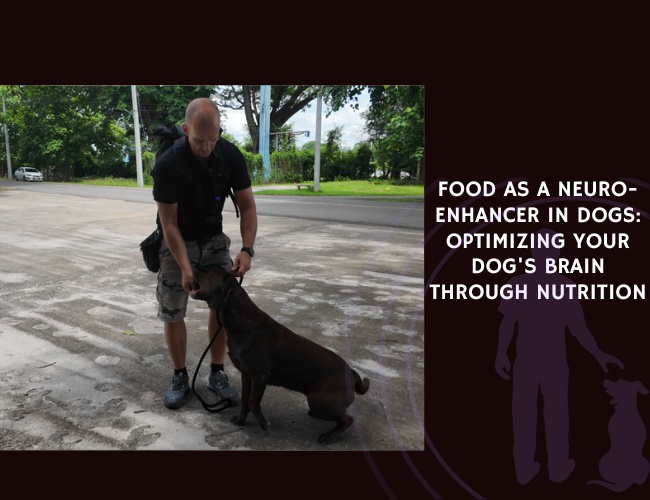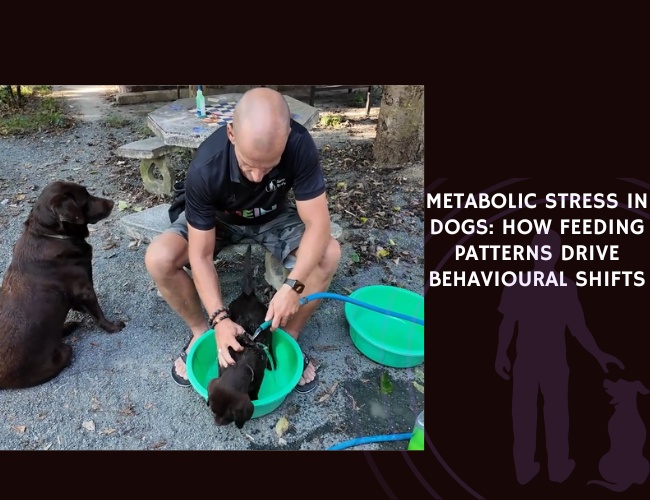Introduction: The Journey from Shelter to Forever Home
Every year, millions of dogs enter shelters across the world, each carrying their own story of resilience, hope, and the potential for transformation. When you walk through those shelter doors, you’re not just meeting dogs—you’re encountering complex individuals navigating one of life’s most challenging transitions. These remarkable animals demonstrate an incredible capacity for adaptation, even as they face the unpredictable nature of shelter life.
Did you know that a dog’s stress response in a shelter environment involves the same hypothalamic-pituitary-adrenal (HPA) axis that humans activate during challenging times? This biological similarity means we can better understand and support our furry friends through their journey. Whether you’re considering adoption, volunteering, or simply wanting to understand these resilient souls better, let us guide you through the fascinating behavioral science behind shelter dogs and their remarkable ability to heal, adapt, and love again.
Character & Behavior: Understanding the Shelter Dog Personality
The Stress Response Spectrum
When dogs first enter a shelter, their behavioral responses tell a story that goes far deeper than what meets the eye. You might notice a dog standing constantly, vocalizing frequently, or yawning repeatedly—these aren’t signs of tiredness or simple restlessness. These behaviors are actually windows into their stress response system, revealing how their amygdala processes the overwhelming sensory input of their new environment.
Common stress behaviors you’ll observe include:
- Excessive vocalization (barking, whining, howling)
- Repetitive movements like pacing or circling
- Yawning when not tired
- Standing alert for extended periods
- Difficulty settling or relaxing
- Escape attempts or barrier chewing
What’s particularly fascinating is that research has identified 43 distinct behavioral indicators in shelter dogs—23 negative and 20 positive emotional states. This means that even in stressful situations, dogs maintain their capacity for positive experiences, a testament to their remarkable resilience. 🐾
Long-Term Residents: A Special Category
Dogs who stay in shelters for over a year develop unique behavioral patterns that require special understanding. These long-term residents often show increased difficulty relaxing and heightened responses to routine events like feeding time. You’ll notice they tend to stand more, vocalize more intensely, and display anticipatory stress behaviors that their shorter-stay counterparts don’t exhibit.
This isn’t because they’re “problem dogs”—rather, their nervous systems have adapted to chronic stress in ways that make acute stressors feel more intense. Think of it like a guitar string that’s been tuned too tight; even gentle strumming produces a sharp, intense sound. Understanding this helps us approach these special souls with the extra patience and specialized care they need.
The Individual Behind the Behavior
Every shelter dog brings their unique personality shaped by genetics, early experiences, and their journey to the shelter. While some dogs rated higher on “aggression” and “high arousal” tend to become long-term residents, it’s crucial to remember these are often fear-based responses rather than personality flaws. Dogs showing lower “amicability” scores aren’t unfriendly—they’re often simply overwhelmed by their circumstances and need time to decompress and show their true selves.
Vocalization & Communication: How Shelter Dogs ‘Talk’ to Us
Decoding the Language of Stress
When your potential furry friend barks, whines, or howls in the shelter, they’re communicating complex emotional states that go beyond simple attention-seeking. Shelter dogs use vocalization as their primary tool to express needs, fears, and even hope. Understanding this communication is key to building that first bridge of trust.
The vocalization vocabulary includes:
- High-pitched whining: Often indicates anxiety or anticipation, particularly common before feeding times
- Deep, repetitive barking: Usually a displacement behavior for frustration or barrier stress
- Howling: Can signal isolation distress or attempts to locate pack members
- Soft whimpering: Frequently a self-soothing mechanism during overwhelming moments
You might notice that dogs with adverse early life histories vocalize differently—their “vocabulary” often includes more fear-based vocalizations and fewer confident, social sounds. This altered communication style reflects how early trauma can shape a dog’s entire approach to expressing needs.
Body Language: The Silent Conversation
Beyond vocal communication, shelter dogs speak volumes through their body language. A tucked tail doesn’t just mean fear—it can indicate the dog is trying to make themselves smaller to avoid confrontation. Similarly, a dog lifting their front leg isn’t always marking territory; in shelter contexts, it’s often a stress response or appeasement gesture.
The fascinating aspect is how quickly this body language can change with positive human interaction. Within just four weeks in a supportive shelter environment, dogs show measurable improvements in their body language, with decreased tension and increased relaxed postures. This transformation reveals the profound impact that understanding and responding to their communication can have.
Reading Between the Lines
Shelter environments can mask a dog’s true communication style. The overstimulating nature of constant noise, unfamiliar smells, and rotating strangers means you’re often seeing a dog’s stress communication rather than their authentic personality. This is why many adopters are pleasantly surprised when their seemingly “quiet” shelter dog becomes a chatty, expressive companion once they feel safe at home. 🧡
Training & Education: Building New Foundations
The Neuroscience of Learning Under Stress
When you’re working with a shelter dog, understanding how stress affects their learning capacity is crucial. The elevated cortisol levels that research has documented in newly admitted shelter dogs directly impact their hippocampus—the brain’s learning and memory center. This means traditional training approaches might need modification to account for their altered neurological state.
During the first four weeks in a shelter, as cortisol levels gradually decrease and immune function improves, dogs become increasingly capable of absorbing new information. This biological timeline suggests that patience during initial training sessions isn’t just kind—it’s scientifically necessary for optimal results.
Effective Training Strategies for Shelter Dogs
Noncontingent Reinforcement: This response-independent food reward system has shown remarkable success in reducing reactive behaviors. Rather than waiting for “good” behavior to reward, you provide treats at regular intervals regardless of behavior, helping to lower overall arousal and create positive associations.
Structured Routine Building: Shelter dogs benefit enormously from predictable patterns. Creating a consistent daily routine helps regulate their HPA axis, leading to:
- Decreased anticipatory stress
- Improved sleep patterns
- Better appetite regulation
- Increased learning receptivity
Social Referencing Training: Teaching shelter dogs to look to humans for guidance in uncertain situations builds crucial trust bonds. This technique is particularly effective for dogs with histories of abuse or neglect, as it creates new neural pathways for positive human association.
Overcoming Training Challenges
You’ll find that certain behaviors require specialized approaches. Dogs showing “hypervigilance”—constant scanning of the environment—need training that first addresses their need for safety before introducing commands. Similarly, dogs displaying “learned helplessness” require extremely gentle, choice-based training that rebuilds their sense of agency.
The key is recognizing that what might appear as “stubbornness” or “disobedience” is often a trauma response or stress-induced learning impairment. By adjusting our training lens to see behavior through a welfare science perspective, we can create more effective, compassionate training protocols.

Health & Physiological Considerations: The Body-Mind Connection
Understanding the Stress-Health Cascade
The relationship between stress and physical health in shelter dogs reveals itself through multiple biological markers. When you adopt a shelter dog, you’re often inheriting not just behavioral patterns but physiological changes that can affect their overall health trajectory.
Key physiological stress indicators include:
- Cortisol elevation: Fecal cortisol levels in newly admitted dogs can be significantly elevated, affecting everything from digestion to immune function
- Immune system changes: Neutrophil and lymphocyte counts shift dramatically, with neutrophils decreasing and lymphocytes increasing as dogs adapt
- Heart Rate Variability (HRV): Decreased HRV indicates autonomic nervous system dysregulation, affecting the dog’s ability to rest and digest properly
- Lysozyme levels: These antimicrobial enzymes decrease under stress, potentially increasing susceptibility to infections
What’s encouraging is that research shows these markers improve significantly after four weeks of stable shelter care, demonstrating the body’s remarkable capacity for recovery when provided with consistent, supportive environments.
Breed and Age Considerations
Your shelter dog’s breed and age significantly influence their stress response and recovery timeline. Older dogs entering shelters face unique challenges—they’re more likely to become long-term residents and show different cortisol response patterns than younger dogs. This isn’t because they’re less adaptable, but because their established neural pathways require more time to reconfigure.
Certain breeds labeled as “dangerous” spend significantly longer in shelters, leading to chronic stress exposure that can alter their physiological baseline. Pit bull-type breeds, despite their renowned loyalty and affection, face extended shelter stays that can lead to more pronounced physiological stress responses. Understanding these breed-specific challenges helps us provide targeted support during rehabilitation.
The Immune System Recovery Timeline
One of the most remarkable findings in shelter dog research is the immune system’s ability to rebound. The initial suppression of immune function—evidenced by decreased lymphocytes and elevated neutrophils—begins reversing within weeks. This recovery follows a predictable pattern:
Week 1-2: Peak stress response, maximum immune suppression Week 3-4: Noticeable improvement in immune markers Week 5-8: Stabilization of immune function Week 9+: Return to near-normal immune parameters
This timeline underscores why those first two months after adoption are crucial for health monitoring and why seemingly minor illnesses during this period shouldn’t be cause for alarm—they’re often signs of an immune system recalibrating. 🧠
Nutritional Support for Behavioral Recovery
The Gut-Brain Axis in Shelter Dogs
While specific research on nutritional interventions for shelter dogs remains limited, the principles of nutritional psychiatry suggest that diet plays a crucial role in behavioral recovery. The gut-brain axis—that bidirectional communication highway between digestive and nervous systems—means that what your shelter dog eats directly impacts their emotional regulation.
A stressed digestive system, common in shelter dogs due to elevated cortisol, affects nutrient absorption and neurotransmitter production. This creates a cycle where poor nutrition exacerbates stress responses, which further impairs digestion. Breaking this cycle requires thoughtful nutritional planning that goes beyond simply providing adequate calories.
Strategic Nutritional Interventions
Digestive Support During Transition: The first month after adoption often brings digestive upset—not from food quality but from stress-induced gut changes. Introducing:
- Easily digestible proteins
- Prebiotic fiber sources
- Consistent feeding schedules
- Small, frequent meals rather than large portions
Supporting Neurotransmitter Production: Though research hasn’t specifically studied tryptophan supplementation in shelter dogs, the principles suggest potential benefits. Foods naturally rich in:
- Tryptophan (turkey, eggs) for serotonin production
- B-vitamins for nervous system support
- Omega-3 fatty acids for inflammation reduction
- Antioxidants for oxidative stress management
Feeding Routines as Behavioral Therapy
You might notice your shelter dog shows intense anxiety around mealtimes—standing, vocalizing, or displaying repetitive behaviors. This isn’t just hunger; it’s often a conditioned stress response from unpredictable shelter feeding schedules. Creating calm, predictable feeding routines serves as behavioral therapy, helping regulate their anticipatory stress response and building positive associations with human presence during vulnerable moments.
Resilient. Overwhelmed. Hopeful.
Stress shapes the shelter dog. Every bark, yawn, or restless step reveals how their nervous system struggles to process uncertainty. These signals aren’t flaws—they’re survival strategies in a world that feels unpredictable.
Long stays leave deeper marks. Chronic stress rewires responses, making small triggers feel overwhelming. Yet with patience and specialized care, even the most tense residents can rediscover calm and trust.



Individual stories matter most. Behind every vocalization or pacing stride lies a unique personality shaped by genetics and history. Recognizing fear as communication—not aggression—unlocks the path to healing and adoption.
Environmental Enrichment & Adaptation Strategies
Creating a Sensory Sanctuary
The transition from shelter to home requires careful environmental management. Research on sensory enrichment reveals that simple interventions can profoundly impact stress levels and adaptation speed. Music therapy, for instance, activates both branches of the autonomic nervous system, helping relieve stress while preventing boredom.
Effective environmental modifications include:
- Auditory enrichment: Classical music or specifically designed dog relaxation tracks can lower arousal
- Visual barriers: Creating “safe zones” where dogs can observe without being seen
- Olfactory comfort: Familiar scents from the shelter or foster home during transition
- Tactile variety: Different textures for bedding to provide choice and control
The key is recognizing that enrichment isn’t just about entertainment—it’s about giving dogs agency in their environment, something often stripped away in shelter settings.
The Foster Care Advantage
Foster care emerges as perhaps the most powerful intervention for shelter dog rehabilitation. Dogs in foster homes show dramatically different stress profiles than their shelter-housed counterparts, with lower cortisol levels and increased resting activity. But beyond the physiological benefits, foster care provides something irreplaceable: the opportunity to practice being a family dog.
Foster environments allow dogs to:
- Decompress from chronic shelter stress
- Learn household routines and expectations
- Build positive associations with human interaction
- Practice crucial social skills in a low-pressure setting
- Receive individualized behavioral support
The protective effect of foster care against adoption failure is remarkable—dogs who spend time in foster before adoption show significantly lower return rates, suggesting that this intermediate step facilitates more successful permanent placements.
Home Transition Protocols
When bringing your shelter dog home, the environment you create can either accelerate or hinder their adaptation. The “3-3-3 rule” often cited by rescue organizations—3 days to decompress, 3 weeks to learn routines, 3 months to feel at home—aligns with the physiological recovery timeline research has documented.
During those crucial first weeks, your home environment should prioritize predictability over excitement. This means:
- Maintaining consistent daily schedules
- Limiting visitors and novel experiences initially
- Providing multiple “retreat” spaces
- Using baby gates rather than closed doors to maintain visual connection
- Keeping sensory stimulation moderate and controllable
Rehabilitation & Recovery: The Path to Healing
Understanding Trauma’s Lasting Impact
Dogs with documented histories of abuse show distinctly different behavioral patterns post-adoption. The adverse early experiences create what researchers describe as “amygdala hypersensitivity”—essentially, their alarm system is set to high alert. This manifests as increased stranger-directed fear, separation anxiety, and attention-seeking behaviors that persist even in loving homes.
You’re not just adopting a dog; you’re becoming part of their healing journey. Understanding that fearful responses to threatening strangers or excessive attachment behaviors aren’t personal failings but trauma responses helps maintain patience during challenging moments. These dogs aren’t “broken”—their brains have adapted to survive adverse conditions, and with time and appropriate support, they can develop new, healthier patterns.
Evidence-Based Rehabilitation Approaches
Systematic Desensitization: Gradually exposing dogs to triggers at sub-threshold levels while pairing with positive experiences helps recalibrate their threat detection system. This might mean:
- Starting with recorded doorbell sounds at very low volume
- Viewing strangers from great distances
- Brief separations of just seconds, building gradually
- Controlled exposure to previous trauma triggers with heavy positive reinforcement
Social Stress-Buffering: Research reveals that dogs with adverse histories show greater cortisol decreases when provided with social support during stressful events. This means your presence during challenging situations isn’t just comforting—it’s physiologically regulatory. Your calm presence literally helps their nervous system downregulate.
Behavioral Momentum Building: Starting with extremely simple, achievable tasks builds confidence and creates positive behavior chains. A dog who’s experienced learned helplessness needs hundreds of small successes to rebuild their sense of efficacy.
Timeline for Recovery
Recovery doesn’t follow a linear path, but research provides general timelines that can help set realistic expectations:
Month 1: Acute stress response, significant physiological changes, limited learning capacity Month 2-3: Improved stress markers, beginning of behavioral flexibility, increased social engagement Month 4-6: Stabilization of most physiological parameters, emergence of true personality Month 7-12: Deep behavioral changes, resolution of many trauma responses, full integration into family life Year 2+: Continued refinement, occasional regression during triggers, overall stability
Remember, setbacks aren’t failures—they’re part of the healing process. A dog who suddenly shows fear of something they’d previously accepted isn’t “going backward”; they’re processing experiences at a deeper level as they feel safer. 🐾

Adoption Success Factors: Making the Right Match
Predicting Long-Term Success
Research has identified several key factors that predict whether an adoption will succeed long-term. Understanding these can help you make informed decisions and set realistic expectations for your journey together.
Positive predictive factors include:
- Prior foster care experience (significantly reduces return risk)
- Appropriate age matching (senior adopters with senior dogs show higher success rates)
- Lifestyle compatibility over aesthetic preferences
- Previous dog ownership experience
- Flexible work schedules during initial adjustment
- Presence of another well-adjusted dog in the home
Risk factors to consider:
- First-time dog ownership combined with dogs showing “high arousal” traits
- Mismatch between exercise needs and available time
- Unrealistic expectations about behavior modification timelines
- Lack of financial preparation for potential medical needs
- Inflexible housing situations
The Critical First Two Weeks
Statistics show that two-thirds of all adoption returns occur within the first 14 days. This isn’t because matches were “wrong” but because this period represents peak adjustment stress for both dogs and families. During these crucial weeks, minor challenges can feel overwhelming without proper support and perspective.
Common challenges during this period that shouldn’t be considered “deal-breakers”:
- House training regression
- Separation anxiety
- Resource guarding of food or toys
- Sleep disruption
- Excessive attachment or following
- Cautious or fearful behavior toward family members
These behaviors often resolve naturally as stress decreases and trust builds. The key is having support systems in place—whether through shelter resources, trainers, or online communities—to provide perspective during challenging moments.
Making the Commitment
When you adopt a shelter dog, you’re not just saving a life—you’re entering into a partnership that will transform both of you. The research is clear: with appropriate support, time, and understanding, even dogs with the most challenging backgrounds can become beloved family members. The question isn’t whether a shelter dog can adapt to your home, but whether you’re prepared for the incredible journey of mutual growth and healing that adoption represents.
Lifestyle & Environment Considerations
Urban vs. Rural Settings
The environment you provide plays a crucial role in your shelter dog’s recovery trajectory. Urban settings with their constant stimulation can initially overwhelm dogs whose stress response systems are already hyperactive. However, they also offer advantages like:
- More frequent, shorter walks that prevent overwhelming exercise sessions
- Controlled socialization opportunities
- Access to specialized training resources
- Structured routines due to space limitations
Rural environments provide different benefits:
- Lower ambient stress from reduced noise and activity
- Natural enrichment through varied terrains and scents
- Space for decompression without forced interactions
- Opportunities for species-appropriate behaviors like sniffing and exploring
Neither is inherently better—success depends on matching the dog’s needs with your environment’s characteristics and your ability to modify challenging aspects.
Multi-Pet Households
Introducing a shelter dog to existing pets requires understanding that their stress response might initially impair normal social skills. Dogs who were previously social might show reactive behaviors, not from true aggression but from overwhelmed coping capacity. The key is recognizing that first impressions in high-stress states don’t predict long-term compatibility.
Successful integration strategies include:
- Parallel walking before face-to-face meetings
- Scent swapping for several days pre-introduction
- Visual barriers initially (baby gates, crates)
- Separate resources to prevent competition
- Supervised, positive interactions with immediate separation at signs of stress
- Gradual increase in together-time as comfort builds
Research shows that incompatibility with existing pets is a leading return reason, but many of these “incompatibilities” could be resolved with proper introduction protocols and patience during the adjustment period.
Children and Shelter Dogs
Families with children face unique considerations when adopting shelter dogs. Dogs with unknown histories require extra vigilance, not because they’re inherently dangerous but because their triggers and thresholds remain unknown initially. However, many shelter dogs become exceptional family companions when properly supported.
Safety and success strategies include:
- Teaching children to recognize stress signals
- Creating dog-free zones for mutual breaks
- Supervising all interactions initially
- Involving children in positive activities (training, enrichment)
- Establishing clear rules about approach and handling
- Ensuring dogs have retreat options when overwhelmed
The beautiful truth is that children who grow up with rescue dogs often develop enhanced empathy and understanding of resilience—life lessons that extend far beyond pet ownership. 😄
Senior Shelter Dogs: Special Considerations
The Overlooked Treasures
Senior dogs face particular challenges in shelters, with research showing they’re significantly more likely to become long-term residents. Yet these mature souls often make the most grateful, easiest companions for the right families. Their stress response differs from younger dogs—often showing more subtle signs that can be missed without careful observation.
Physical and behavioral considerations for senior adoptions:
- Lower energy requirements but need for consistent, gentle exercise
- Potential for undiagnosed medical conditions affecting behavior
- Established personality with less behavioral flexibility
- Deeper sleep needs for stress recovery
- Possible cognitive changes affecting learning
- Enhanced benefit from routine and predictability
Health Management in Senior Shelter Dogs
Older shelter dogs often arrive with complex medical histories—or no history at all. The stress of shelter life can exacerbate age-related conditions, making comprehensive veterinary evaluation essential. Common issues that might masquerade as behavioral problems include:
- Arthritis causing “grumpiness” or reluctance to move
- Dental disease leading to food aggression or irritability
- Vision or hearing loss creating startle responses
- Cognitive dysfunction presenting as anxiety or confusion
- Thyroid imbalances affecting energy and mood
The investment in senior dog healthcare often pays dividends in quality of life improvements that transform seemingly “difficult” dogs into comfortable, content companions.
The Rewards of Senior Adoption
What senior shelter dogs lack in years, they compensate for in gratitude and grace. These dogs often show remarkable behavioral improvements once their physical comfort is addressed. They typically:
- Require less training and exercise than younger dogs
- Show deep appreciation for comfort and routine
- Integrate more quickly into calm households
- Provide perfect companionship for less active lifestyles
- Demonstrate remarkable resilience despite past challenges
The shortened timeline might feel bittersweet, but many adopters describe senior dog adoption as the most rewarding experience of their lives—concentrated love that teaches us about making every moment count.
Policy Implications & Shelter Reform
Evidence-Based Shelter Practices
The research clearly indicates that traditional shelter models often inadvertently increase stress and reduce adoptability. Progressive shelters implementing evidence-based practices see dramatic improvements in both animal welfare and adoption success rates.
Recommended shelter reforms based on research:
- Routine stress assessment using multiple parameters (behavioral, physiological, immunological)
- Minimum four-week stabilization period before behavioral evaluation
- Expanded foster programs with support resources
- Environmental enrichment as standard protocol, not luxury
- Behavioral rehabilitation programs targeting specific stress responses
- Transparent communication about adjustment expectations with adopters
The Economics of Compassion
While comprehensive rehabilitation programs require initial investment, the long-term economic benefits are substantial. Reduced return rates mean:
- Lower intake numbers over time
- Decreased euthanasia rates
- Reduced staff stress and turnover
- Improved community reputation and support
- Increased donation and volunteer engagement
One successful foster-based rescue reported 50% reduction in returns after implementing pre-adoption foster requirements, translating to thousands of dollars saved in re-intake and re-marketing costs.
Community Involvement Solutions
Creating successful outcomes for shelter dogs requires community-wide involvement. Research suggests that volunteer programs focusing on stress reduction—through walking, reading to dogs, or simply providing calm presence—significantly improve welfare markers. Communities can contribute through:
- Foster networks for temporary and emergency care
- Volunteer enrichment programs
- Corporate sponsorship of rehabilitation programs
- Educational outreach about adjustment expectations
- Support groups for new adopters
- Professional services donated or discounted for shelter animals
Conclusion: Is a Shelter Dog Right for You?
After exploring the complex science behind shelter dog behavior, rehabilitation, and adoption success, you might wonder if you’re ready for this journey. The truth is, adopting a shelter dog isn’t just about providing a home—it’s about participating in a remarkable transformation story where both you and your new companion will grow in ways you never expected.
The research tells us that with patience, understanding, and appropriate support, even dogs with the most challenging backgrounds can become beloved family members. That four-week improvement in stress markers isn’t just a statistic—it represents real dogs finding their way back to trust and joy. The protective effect of foster care isn’t just data—it’s the difference between a successful adoption and another heartbreaking return.
If you’re considering adoption, ask yourself:
- Can you provide consistency during those crucial first months?
- Are you prepared for the possible behavioral challenges that might emerge?
- Do you have support systems in place for when things feel overwhelming?
- Can you see past the shelter stress to the dog underneath?
- Are you ready to be part of a healing journey, not just a pet acquisition?
If you answered yes to these questions, a shelter dog might be waiting for you right now—stressed, certainly, but also resilient, adaptable, and capable of forming bonds that will transform your understanding of unconditional love. The science shows us how stress impacts these remarkable animals, but it also shows us their incredible capacity for recovery when given the chance.
Your shelter dog won’t just be a pet; they’ll be living proof that second chances work, that trauma can heal, and that the bond between humans and dogs transcends circumstances. In saving them, you might just find they save you right back. 🧡
Remember, every shelter dog’s journey is unique, but none of them have to walk it alone. Whether through adoption, fostering, volunteering, or simply spreading awareness, you can be part of the solution that helps these incredible animals find their way home—not just to a house, but to a place where their stress fades, their trust rebuilds, and their true personalities finally get to shine.
The research is clear, the need is great, and the rewards are immeasurable. The question isn’t whether shelter dogs can adapt to life outside the shelter—they absolutely can. The question is whether we’re ready to give them the chance they deserve. Based on everything science tells us, the answer should be a resounding yes.










